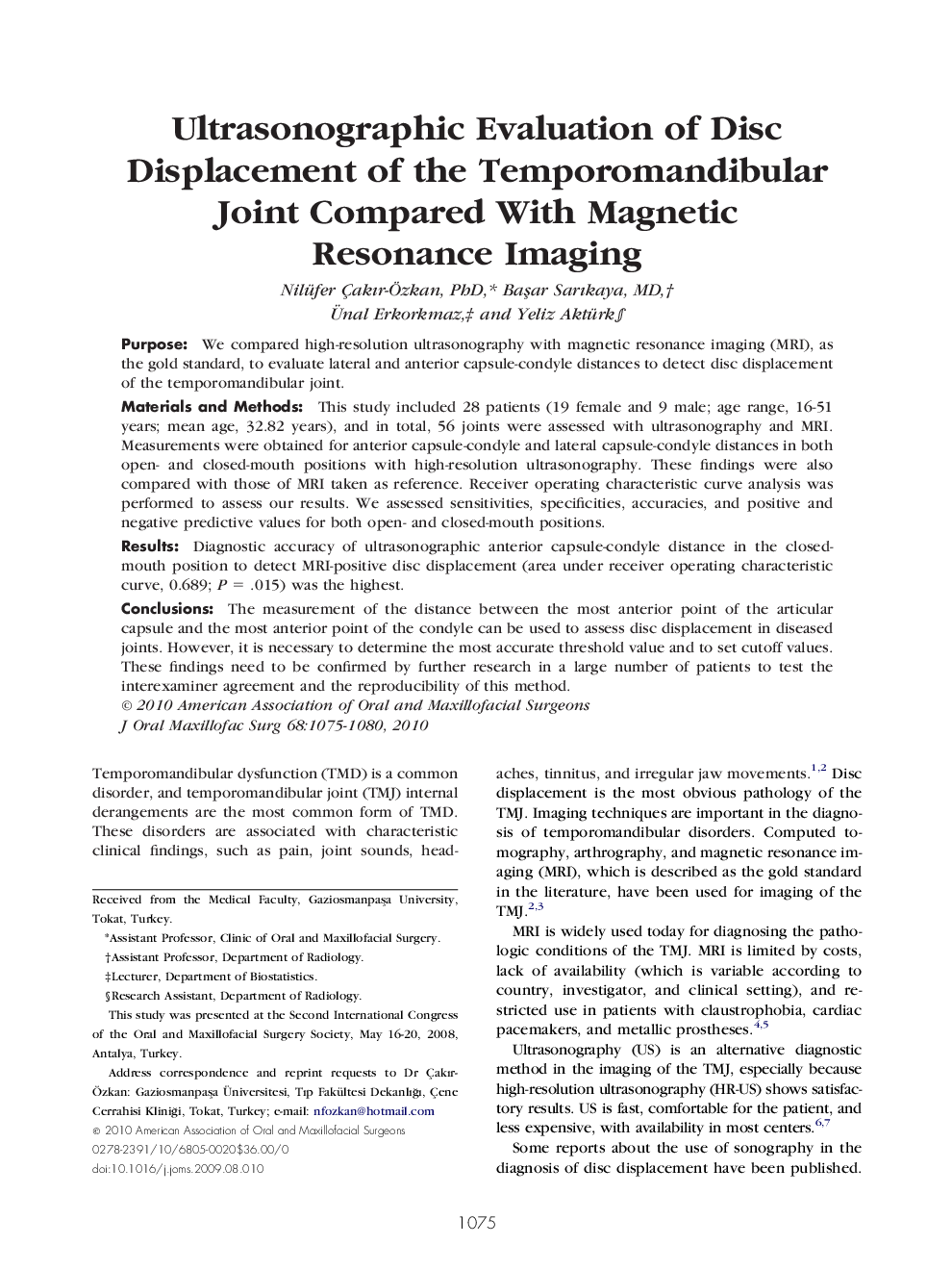| Article ID | Journal | Published Year | Pages | File Type |
|---|---|---|---|---|
| 3155008 | Journal of Oral and Maxillofacial Surgery | 2010 | 6 Pages |
PurposeWe compared high-resolution ultrasonography with magnetic resonance imaging (MRI), as the gold standard, to evaluate lateral and anterior capsule-condyle distances to detect disc displacement of the temporomandibular joint.Materials and MethodsThis study included 28 patients (19 female and 9 male; age range, 16-51 years; mean age, 32.82 years), and in total, 56 joints were assessed with ultrasonography and MRI. Measurements were obtained for anterior capsule-condyle and lateral capsule-condyle distances in both open- and closed-mouth positions with high-resolution ultrasonography. These findings were also compared with those of MRI taken as reference. Receiver operating characteristic curve analysis was performed to assess our results. We assessed sensitivities, specificities, accuracies, and positive and negative predictive values for both open- and closed-mouth positions.ResultsDiagnostic accuracy of ultrasonographic anterior capsule-condyle distance in the closed-mouth position to detect MRI-positive disc displacement (area under receiver operating characteristic curve, 0.689; P = .015) was the highest.ConclusionsThe measurement of the distance between the most anterior point of the articular capsule and the most anterior point of the condyle can be used to assess disc displacement in diseased joints. However, it is necessary to determine the most accurate threshold value and to set cutoff values. These findings need to be confirmed by further research in a large number of patients to test the interexaminer agreement and the reproducibility of this method.
